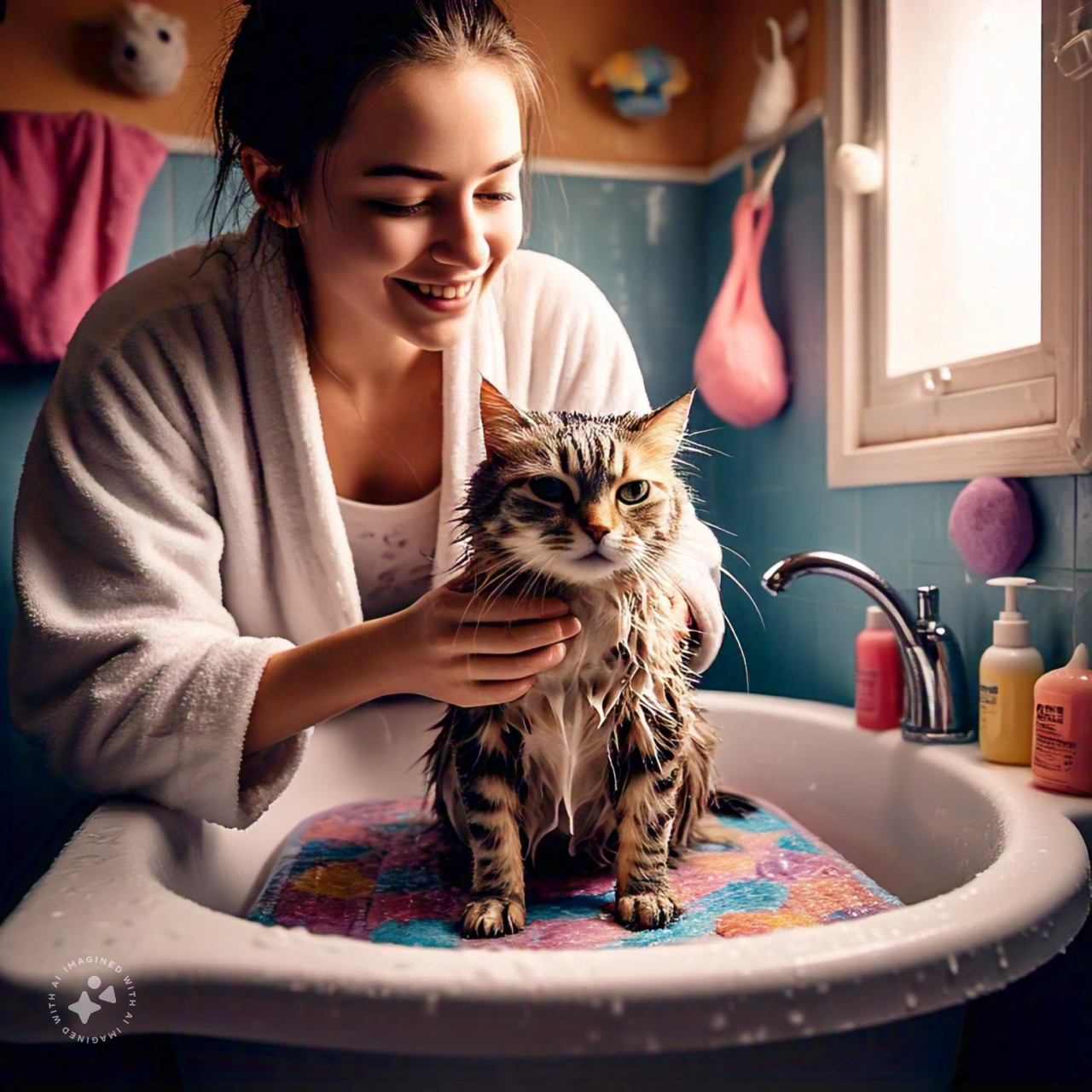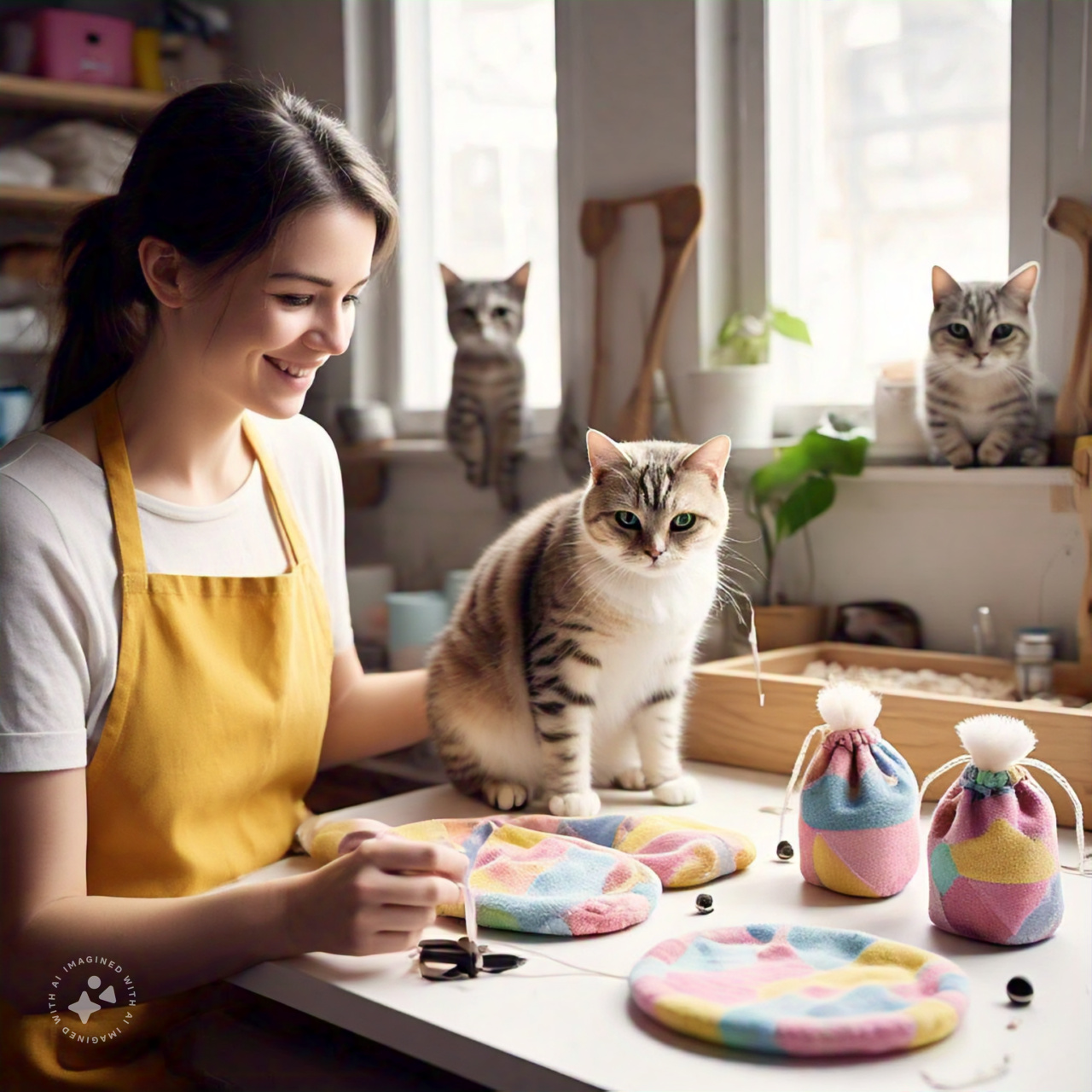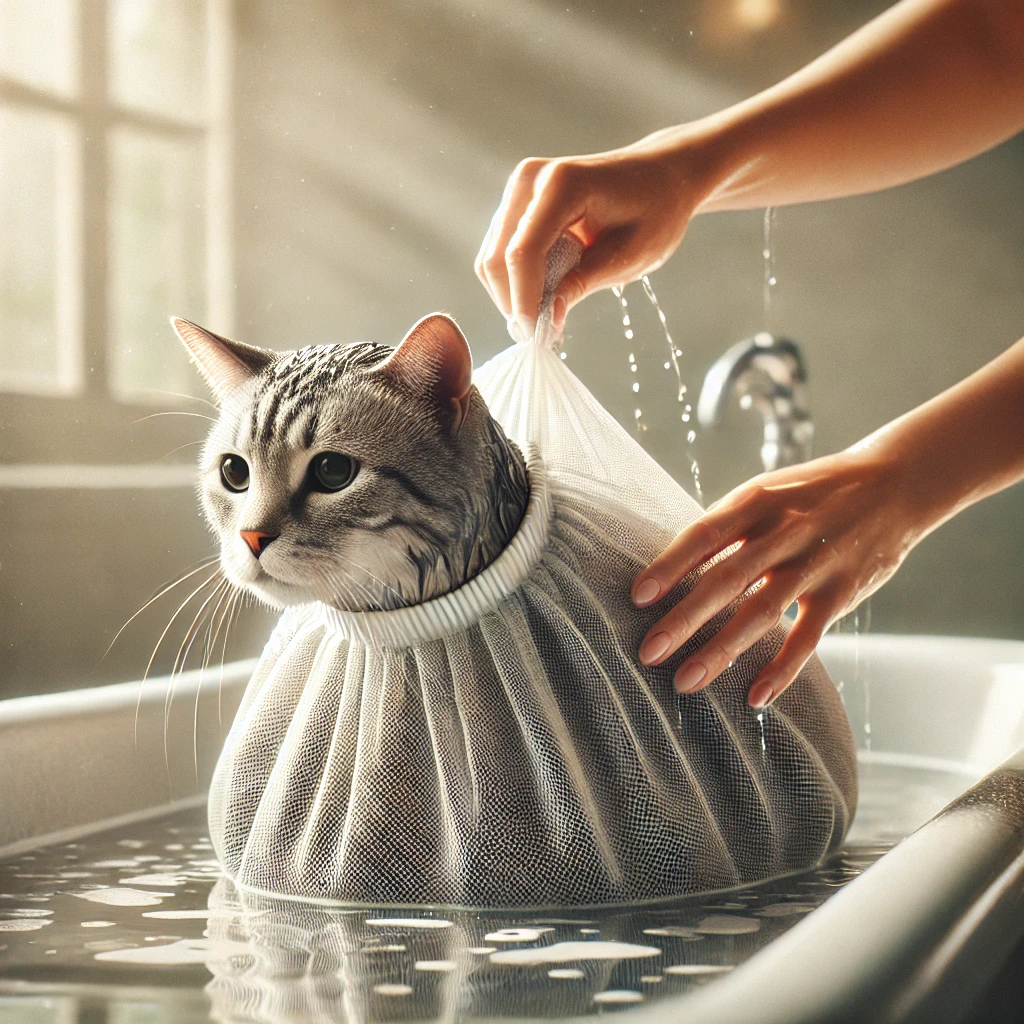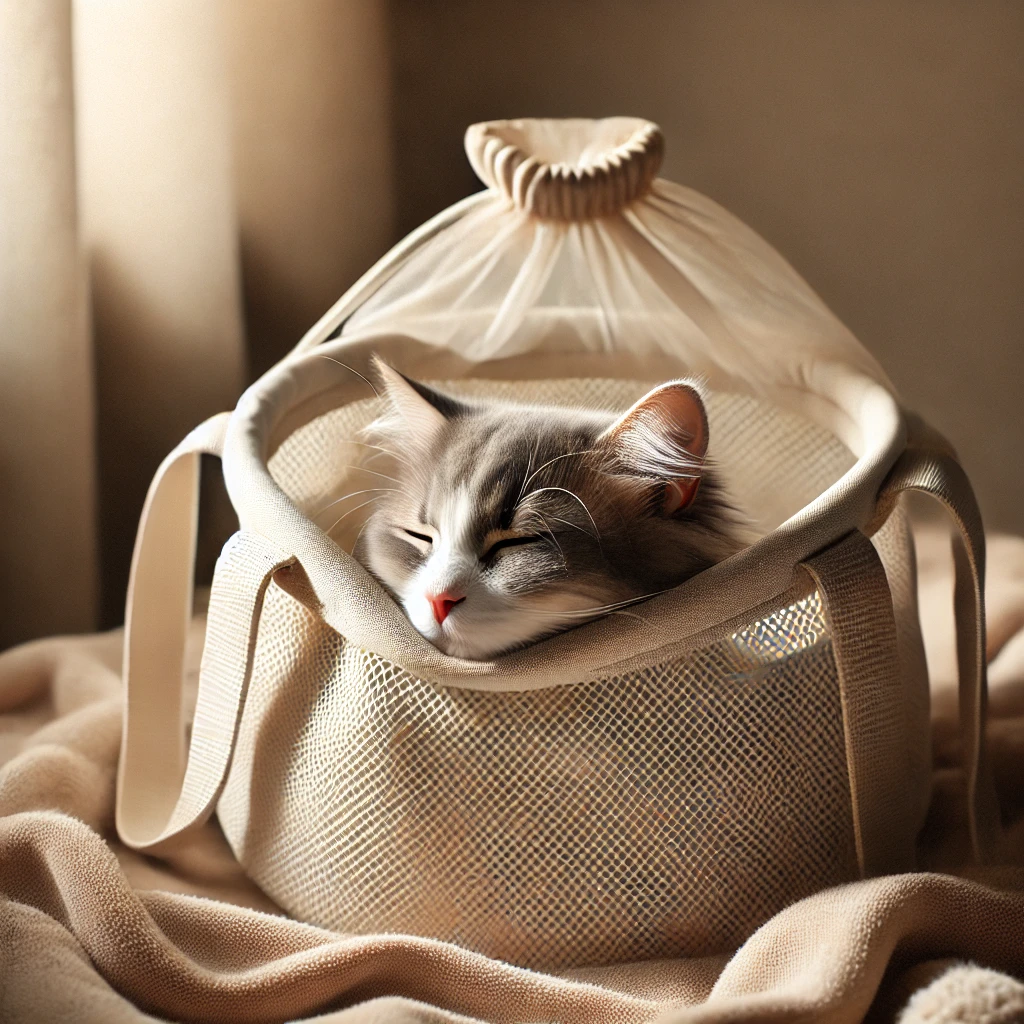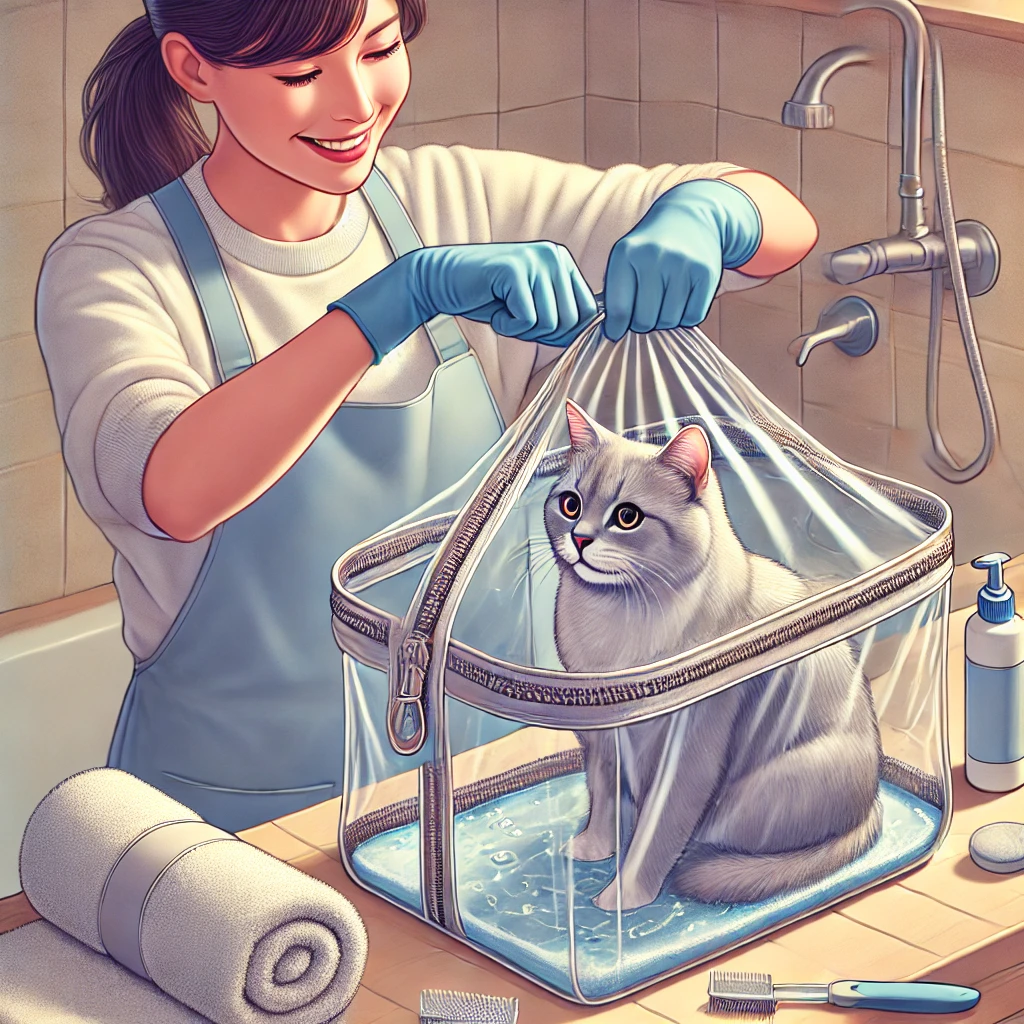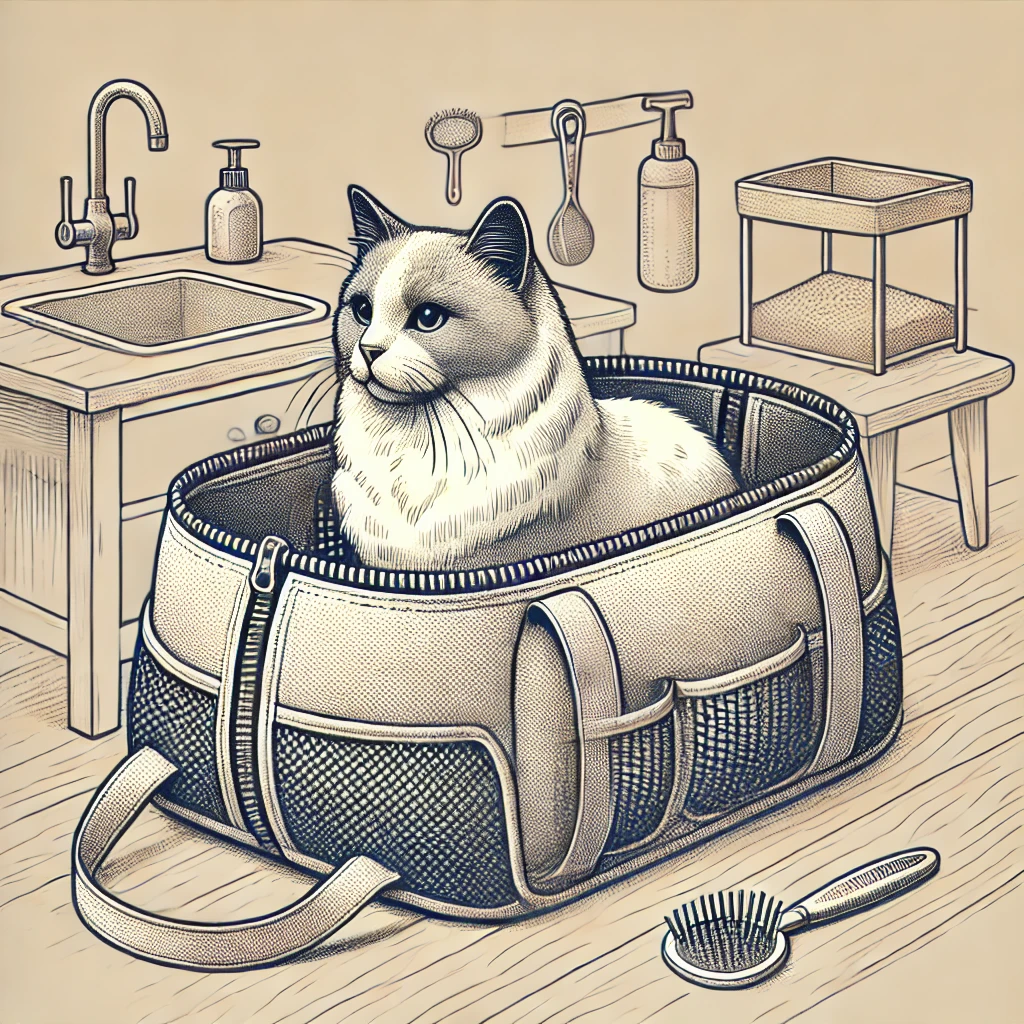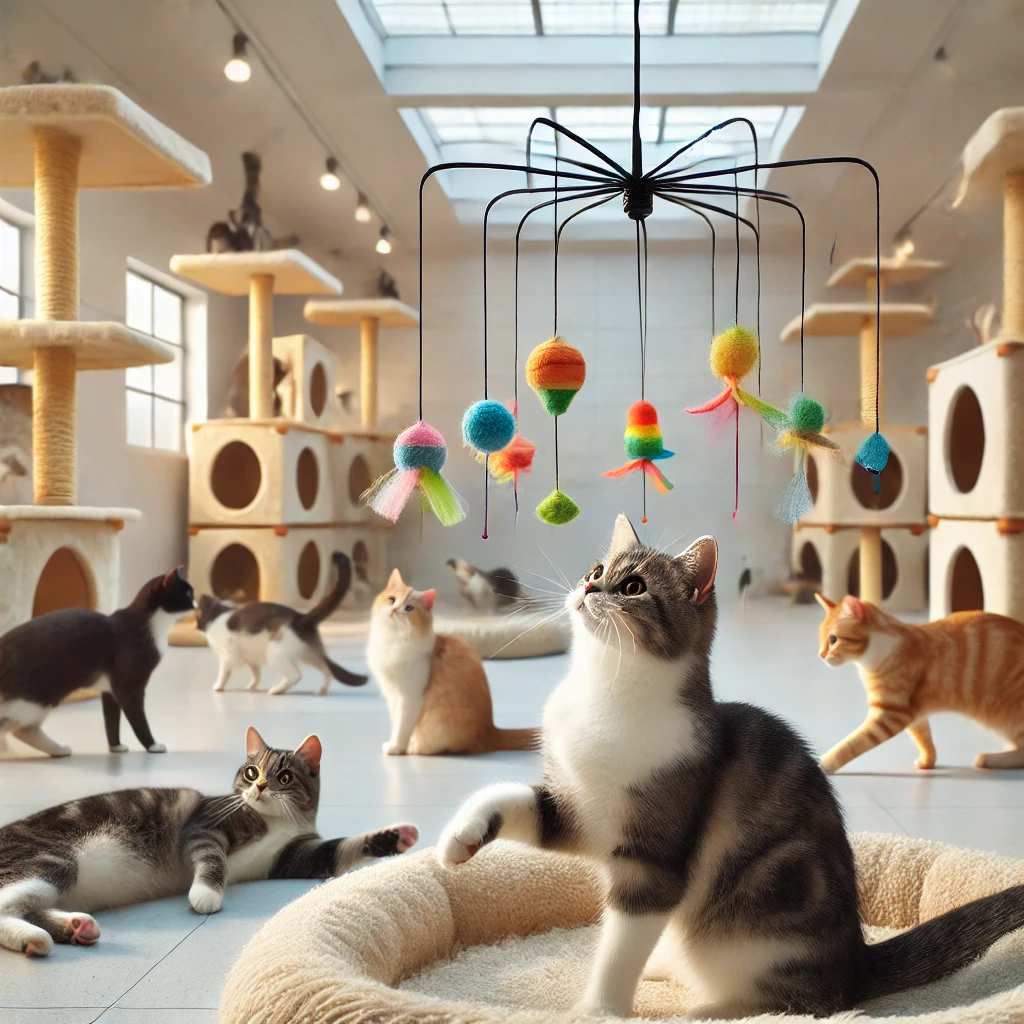Avoid These 7 Common Mistakes When Using a Cat Bath Bag
Using a Cat Bath Bag
Bathing a cat can be an incredibly stressful experience, both for the feline and its owner. Most cats despise water, making the task of giving them a proper bath even more challenging. However, cat bath bags, specially designed enclosures that contain the cat while allowing the owner to clean it, have become a popular solution to this problem. These bags offer a convenient and less stressful way to clean a cat while minimizing the risk of scratching, biting, or running away. Despite their usefulness, many pet owners often make mistakes when using them, leading to a negative experience for both the cat and the person attempting the bath.
The rise in popularity of cat bath bags can be attributed to their simplicity and ability to make cat bathing more manageable. These bags are typically made of mesh or breathable fabric that allows water and soap to pass through while ensuring the cat’s body remains secured. They usually feature zippers, velcro straps, or drawstrings to keep the cat contained during the bath. While these bags can be highly effective when used correctly, there are certain pitfalls to be aware of to ensure a smooth and successful bathing session.
This article aims to address the seven most common mistakes pet owners make when using a cat bath bag. By understanding these mistakes, owners can avoid unnecessary stress, discomfort, and even harm to their cats. Whether it’s choosing the wrong type of bag, mishandling the cat inside it, or using incorrect techniques during the bathing process, these mistakes can severely impact the outcome of the bath. It’s important to educate oneself on the proper way to use a cat bath bag to ensure a safe and stress-free experience for both the cat and the owner.
Understanding the Benefits of a Cat Bath Bag
Before delving into the common mistakes, it’s essential to understand why a cat bath bag is a beneficial tool for grooming and cleaning your feline companion. The cat bath bag offers several advantages, especially when compared to other traditional methods of bathing a cat. For one, it helps prevent the cat from wriggling free, which is often the root cause of many unsuccessful bath attempts. Additionally, the bag can protect the owner from scratches, which is a common risk during a bath when the cat is panicking or trying to escape.
Another advantage is that the bag allows the cat to remain relatively still while the owner cleans it. The mesh fabric allows for water to flow through, making it easier to rinse the cat’s fur without causing excess discomfort. Furthermore, the bag provides a more controlled environment, which can help minimize stress for the cat. By limiting the cat’s movement, the bag helps the animal feel more secure and reduces the chance of injury to both the cat and the person bathing it.
Understanding these benefits helps frame the discussion of the mistakes to avoid when using a cat bath bag. These advantages become null if the bag is not used correctly or if the bathing process is not handled with care. To avoid making these mistakes, it’s important to follow certain best practices and recommendations, which we will cover in the subsequent sections.
The Importance of Preparation
Preparation is key when using a cat bath bag. Just like any grooming or bathing procedure, the right environment and mindset will make the entire process much easier. Preparing the cat beforehand, choosing the right bath supplies, and setting up the bathing area are all crucial steps to ensure success. Moreover, the choice of the bath bag itself plays a pivotal role. Selecting the wrong bag can lead to discomfort for the cat, making the entire experience stressful and potentially dangerous.
Additionally, understanding the cat’s temperament and comfort level is essential before even attempting to bathe it in a bag. Some cats are more tolerant of water and grooming, while others may react with fear or aggression. Assessing the situation and understanding the unique needs of your cat will help guide you in selecting the appropriate tools and techniques.
Common Mistakes When Using a Cat Bath Bag
Bathing a cat with a bath bag can seem like a great idea, but it requires careful attention to detail and the correct approach to avoid mishaps. While the bath bag itself is a helpful tool, it is easy for pet owners to make mistakes that can lead to a stressful and uncomfortable experience for both the cat and the person attempting the bath. In this section, we will explore seven of the most common mistakes pet owners make when using a cat bath bag and provide guidance on how to avoid them. Understanding these mistakes is critical to ensuring a smoother, more effective bathing process.
Not Choosing the Right Cat Bath Bag
One of the most common mistakes pet owners make is choosing the wrong type of cat bath bag. Cat bath bags come in a variety of sizes, materials, and designs, so selecting one that is unsuitable for your cat’s size and temperament can be a major issue. For example, a bag that is too small will restrict the cat’s movement, making it difficult to clean the cat properly. On the other hand, a bag that is too large may fail to securely contain the cat, allowing it to wriggle free and escape the bath.
It’s also important to choose a bag that is made from the right material. Some bags are made from mesh, which is breathable and allows water to pass through, while others may be made of plastic or other non-breathable materials. While plastic bags may seem more secure, they can trap heat and moisture, making the cat feel uncomfortable and stressed. Mesh bags are generally the best option, as they allow airflow and help maintain a comfortable environment for the cat during the bath.
When selecting a bath bag, it is important to consider the size of your cat. Measure the length and width of your cat’s body and choose a bag that will comfortably accommodate its size without being too tight. Many bath bags are adjustable, with drawstrings or Velcro straps that can help ensure a secure fit. Make sure to choose a bag that provides enough space for your cat to remain comfortable without being able to escape.
Failing to Acclimate the Cat to the Bath Bag
Cats are naturally curious creatures, but they can also be highly sensitive to new experiences. For many cats, the idea of being placed inside a bath bag can be a source of anxiety. Unfortunately, many pet owners make the mistake of attempting to use the bath bag without taking the time to properly acclimate their cat to it first. This can lead to stress, fear, and resistance when the bag is used for the first time.
It’s essential to gradually introduce the bath bag to your cat before using it for an actual bath. Start by allowing your cat to explore the bag in a safe, non-threatening environment. Place the bag on the floor and allow the cat to approach it at its own pace. You can even place some treats or toys inside the bag to encourage the cat to investigate it further. The goal is to make the bag a familiar object to your cat, so it doesn’t view it as a source of stress when it’s time for the bath.
If your cat seems particularly fearful or apprehensive about the bath bag, consider taking smaller steps to help them feel more comfortable. For example, you can start by gently placing your cat inside the bag for a few moments while it’s not wet. Gradually increase the amount of time your cat spends inside the bag until it becomes more accustomed to the sensation. Only proceed with the full bath once your cat seems relaxed and comfortable in the bag.
Using the Bath Bag in a Stressful Environment
A stressful environment can contribute significantly to a negative bath experience. Many pet owners make the mistake of bathing their cats in noisy, chaotic, or unfamiliar spaces, which increases the cat’s stress levels and makes it harder for both the cat and owner to stay calm. When using a bath bag, it’s important to choose a quiet, controlled environment where your cat feels safe and secure.
The bathroom is typically the most suitable place to bathe a cat, as it is easy to control the water temperature and the space can be cleaned quickly afterward. However, the presence of loud noises, such as running water, vacuum cleaners, or other pets, can make the experience overwhelming for the cat. To reduce stress, consider placing the cat in the bath bag before turning on any water. Make sure to keep the environment calm and free of distractions, and take your time to avoid rushing the process.
It’s also important to consider the temperature of the room where the bath will take place. A cold, drafty room can make your cat feel uncomfortable, while a hot room may increase the chances of overheating. Ensure that the room temperature is comfortable and conducive to a relaxing bath session. A well-lit room can also help to ease your cat’s nerves, as it will help them feel more in control of the situation.
Incorrect Water Temperature and Bathing Techniques
Another critical mistake that pet owners often make when using a cat bath bag is failing to check the water temperature before starting the bath. Water that is too hot or too cold can be highly uncomfortable for a cat, making them more likely to resist the bath and associate the experience with discomfort. To avoid this mistake, always test the water temperature before using it on your cat. The water should be warm but not too hot, around 100-102 degrees Fahrenheit (37-38 degrees Celsius).
In addition to the water temperature, it’s important to use the correct bathing techniques when cleaning your cat in the bath bag. Some owners make the mistake of scrubbing too aggressively or using harsh grooming products that irritate the cat’s skin. When bathing your cat, be gentle and use pet-safe shampoos that are specifically formulated for feline skin. Avoid getting soap or water into your cat’s eyes, ears, or mouth, as this can cause further stress and discomfort.
It’s also essential to rinse your cat thoroughly to remove all shampoo or soap residue. Leftover soap can cause itching and irritation, which may make your cat anxious and uncomfortable after the bath. Be sure to carefully rinse your cat’s fur using lukewarm water until the water runs clear, ensuring that no product remains in the coat.
Overloading the Bath Bag
Overloading the bath bag is another mistake many cat owners make. It can be tempting to bathe multiple cats at once or try to clean the cat while it is tightly secured in the bag. However, overloading the bag can lead to discomfort, restricted movement, and increased stress for your cat. Cats are naturally independent animals, and being confined in a small space with limited room to move can make them feel trapped.
To avoid this mistake, always use a bath bag that is large enough to comfortably fit your cat without crowding them. If you are attempting to bathe more than one cat, be sure to use separate bags for each animal. This will prevent them from becoming agitated or scared due to overcrowding and ensure that each cat can be properly cleaned without feeling restricted.
It’s also important to ensure that the bag is properly closed without being too tight. The bag should allow your cat to move its legs and head freely while keeping it secure. If the bag is too tight, your cat may feel restricted, which can lead to panic and increased stress.
Not Using a Proper Drying Method
After the bath is completed, it’s easy for pet owners to make the mistake of neglecting the drying process. Wet cats are prone to getting cold and may become agitated if they are not dried properly. Many owners simply leave their cats wet after the bath, thinking they will dry on their own. However, this can result in discomfort, and in some cases, may even lead to health issues like chills or hypothermia.
To properly dry your cat after the bath, gently pat the fur with a soft towel to absorb excess water. Avoid rubbing the fur too harshly, as this can cause matting and discomfort. Once the majority of the water has been absorbed, you can allow the cat to air dry in a warm, dry space. If your cat tolerates it, you can use a blow dryer on a low, cool setting to speed up the drying process. Make sure to keep the blow dryer at a safe distance from the cat to avoid burns or discomfort.
Skipping Post-Bath Comfort and Reassurance
The final mistake is failing to provide the cat with comfort and reassurance after the bath. A cat may feel stressed or vulnerable after being placed in a bath bag, even if the bath itself went smoothly. Immediately after the bath, spend some time cuddling, comforting, and reassuring your cat. Offer them a quiet space to rest and recover from the experience, and avoid forcing them to do anything else, like eating or playing, right away.
Provide positive reinforcement, such as treats or petting, to help your cat associate the bath with something positive. This will make future baths easier for both you and your cat.
The Best Practices for Bathing Your Cat with a Bath Bag
Using a cat bath bag can be an effective way to bathe your cat while reducing stress and risk of injury for both the cat and the owner. However, to ensure that the process goes smoothly and that the cat remains comfortable throughout, it’s crucial to follow best practices. In this section, we’ll explore the most effective and humane techniques for bathing a cat using a bath bag, ensuring that the experience is as stress-free as possible for all parties involved.
Proper Preparation and Environment Setup
The first step in ensuring a successful bath is to make sure that both the cat and the environment are properly prepared. A clean and quiet environment is essential for creating a calm atmosphere for the bath. Select a space where you can easily control the water temperature and minimize distractions. Ideally, the bathroom is the best place to bathe your cat, as it provides a manageable space and a source of warm water.
Before placing your cat in the bath bag, ensure that the room temperature is comfortable. Cats can be particularly sensitive to extreme temperatures, and you want to avoid creating an environment that may cause them stress. Use a thermometer to check the room temperature, which should ideally be between 70°F to 80°F (21°C to 27°C).
Next, gather all the necessary supplies for the bath. This includes the bath bag, a gentle cat-specific shampoo, a towel, a cup for rinsing, and a blow dryer (optional for drying). Having everything on hand ensures that you won’t have to leave your cat unattended during the process, which can cause unnecessary anxiety.
Gradually Introducing Your Cat to the Bath Bag
Before actually bathing your cat, it’s crucial to help your cat become familiar with the bath bag. Cats are naturally curious creatures, but they may still be wary of new objects and experiences. Gradually introducing your cat to the bath bag will help minimize fear and resistance when it’s time for the actual bath.
Start by placing the bath bag on the floor and allowing your cat to explore it at its own pace. Don’t force the cat into the bag—let them investigate it freely. You can place some treats or catnip inside the bag to entice your cat to enter. If your cat shows any signs of anxiety, such as hissing or backing away, don’t rush them. Give your cat time to become comfortable with the sight, smell, and feel of the bag.
Once your cat seems comfortable with the bath bag, you can proceed by gently placing them inside it for short periods. Begin with just a few seconds and gradually increase the amount of time the cat spends inside the bag. This allows your cat to become accustomed to the sensation of being inside the bag without overwhelming them. Only when your cat appears relaxed and at ease should you move forward with using the bath bag for its intended purpose.
Ensuring the Right Bathing Technique and Water Temperature
Once your cat is securely inside the bath bag, it’s time to begin the bathing process. One of the most crucial factors for a successful bath is ensuring that the water temperature is comfortable for the cat. Cats have sensitive skin, and water that is too hot or too cold can cause discomfort or even harm. Aim for lukewarm water, roughly between 100°F to 102°F (37°C to 38°C), which is ideal for most cats.
Before turning on the water, check the temperature by testing it on your wrist or elbow. Once you’re satisfied with the water temperature, it’s time to gently introduce your cat to the water. If you’re using a bath bag with mesh openings, you may be able to slowly pour or sprinkle water over your cat’s body. If the water is in a basin or sink, be sure to wet the cat’s body gradually to avoid startling them with a sudden splash of water.
When applying shampoo, make sure to use a formula designed specifically for cats. Avoid human shampoos, as they can irritate a cat’s sensitive skin and disrupt the natural oils that keep its coat healthy. Apply a small amount of shampoo to your hands and gently massage it into your cat’s fur, starting at the neck and working your way down. Be careful to avoid the cat’s face, ears, and eyes, as water and shampoo in these sensitive areas can cause discomfort or injury.
Rinsing Thoroughly and Gently
After lathering your cat with shampoo, it’s essential to thoroughly rinse the coat to remove all the soap. Leftover shampoo can irritate the skin and cause itching, so ensure that no residue is left behind. You can rinse the cat by gently pouring or spraying water over its body using a cup or a handheld showerhead. Make sure the water flows gently and doesn’t splash, as sudden movements can startle your cat.
Be gentle during the rinsing process, as rough water pressure or rapid movements can cause your cat to become anxious or agitated. Rinse each section of your cat’s body thoroughly, checking for any soap that remains in the fur. It’s important to take your time with this step to avoid leaving any shampoo behind, as residue can cause further discomfort later.
Drying Your Cat Safely and Comfortably
Once the bath is complete, it’s time to dry your cat. Drying is just as important as the bathing process itself, as a wet cat can easily become chilled, especially if they are left in a cool environment. Never skip the drying step, and avoid letting your cat air-dry unless the room temperature is warm and comfortable.
Begin by gently patting your cat with a soft towel to absorb excess water. Avoid rubbing the towel into the fur, as this can cause tangling and matting. If your cat is comfortable with it, you can use a blow dryer on a low, cool setting to help dry their fur more quickly. Keep the blow dryer several inches away from the cat’s body to prevent overheating or burning their skin. Some cats may be frightened by the sound of the blow dryer, so proceed cautiously and stop if the cat seems too stressed.
If your cat becomes too anxious during the drying process, consider letting them rest in a warm, quiet room with a towel to dry naturally. Cats will often groom themselves to finish the drying process, so give them time to clean their fur if they prefer.
Providing Post-Bath Reassurance and Positive Reinforcement
After the bath and drying process, it’s essential to offer reassurance and positive reinforcement to your cat. Cats can feel vulnerable after being bathed, and they may need time to relax and recover from the experience. Spend some time with your cat, offering gentle strokes and speaking softly to them to help calm their nerves.
Positive reinforcement, such as offering your cat a treat or their favorite toy, helps them associate the bath with something positive. This will make future baths less stressful, as your cat will learn that bathing is followed by rewards and comfort.
Cats are highly sensitive to their owners’ emotions, so it’s important to remain calm and patient throughout the process. If you remain composed, your cat will feel more at ease and less likely to become anxious or fearful during future bathing sessions.
Establishing a Routine for Regular Baths
To make bath time less stressful for both you and your cat, consider establishing a routine for regular baths. Frequent, short bathing sessions will help your cat become accustomed to the process and reduce the level of anxiety over time. However, you don’t need to bathe your cat too often; most cats only need a bath every few months unless they have a medical condition or are exposed to dirt or parasites.
By keeping the bathing process consistent and predictable, your cat will come to recognize the routine and feel more comfortable with it. Make sure to maintain a calm environment, use the appropriate products, and gradually acclimate your cat to the bath bag before each session.
Summary
Bathing a cat with a bath bag is a manageable and effective way to clean your cat, but it requires preparation, patience, and careful attention to detail. Following best practices for setting up the environment, introducing the bath bag to your cat, using the right water temperature and techniques, and drying the cat properly are all key steps in ensuring a successful bathing experience. By offering post-bath comfort and reassurance, you can make the experience more pleasant for your cat, reducing stress for future sessions.
By incorporating these best practices, you can help ensure that your cat’s bath time is as stress-free and comfortable as possible. While bathing a cat may never be a completely relaxing experience, using a cat bath bag with the right techniques will help you maintain a good relationship with your pet while keeping them clean and healthy.
Conclusion and Tips for Stress-Free Cat Bathing
Bathing a cat is often perceived as a daunting and challenging task, but with the right approach, it doesn’t have to be. The use of a cat bath bag can make the entire process more manageable by providing a controlled and secure environment for your cat, minimizing stress, and reducing the risk of injury. However, it’s essential to avoid common mistakes and follow best practices to ensure that the experience is as smooth as possible for both you and your feline companion. In this concluding section, we’ll recap the key points discussed throughout the article and provide additional tips to make future bath sessions easier, less stressful, and more successful.
Reaffirming the Benefits of Using a Cat Bath Bag
Cat bath bags offer several distinct advantages for both cats and their owners. They help keep the cat secure and minimize the chances of scratching or escaping during the bath. The mesh fabric or breathable material used in most bath bags allows water to flow through easily, which helps prevent the cat from overheating and ensures a gentle, thorough cleaning. Moreover, the bag keeps the cat relatively still, which makes it easier to clean and rinse the fur without the cat thrashing around.
By offering a controlled environment, a cat bath bag can help alleviate some of the common stressors that arise during a typical bath. The bag provides a safe, confined space, which allows the owner to focus on the cleaning process without worrying about the cat running off or causing harm. However, to reap the full benefits of the bath bag, owners must follow the best practices and avoid common mistakes that can turn bath time into a stressful ordeal for both parties.
Creating a Positive Bathing Experience for Your Cat
One of the most important factors in reducing stress during bath time is ensuring that the experience is as positive and comfortable as possible for your cat. This begins with proper preparation. Ensuring that the bathing area is calm, quiet, and at the right temperature can go a long way in helping your cat feel at ease. Avoid bathing your cat in environments with excessive noise, such as near loud appliances or in rooms with lots of foot traffic, as this can increase the cat’s anxiety.
When using the cat bath bag, it’s also essential to remember that the bathing process should be gradual and gentle. Sudden movements or rushing through the bath will only contribute to stress and make the experience more uncomfortable for the cat. Take your time to introduce the water slowly, ensuring that it is at the correct temperature, and use a cat-safe shampoo that is gentle on the feline’s skin. By using gentle motions and being mindful of your cat’s comfort, you can turn bath time into a more positive experience that reduces stress for both of you.
The Importance of Routine and Patience
Cats are creatures of habit, and establishing a consistent routine can help them become more comfortable with the bath process. Regular bathing, done in a calm and controlled manner, will help your cat become familiar with the bath bag and the entire bathing routine. However, it’s important to note that cats don’t need frequent baths. In general, cats only require a bath every few months unless they have a specific need, such as a medical condition or a particularly dirty coat. Over-bathing can be detrimental to their skin and coat health, so avoid bathing your cat too frequently.
In addition to regular bathing, patience is crucial. Some cats may take longer to acclimate to the bath bag and the bathing process, so don’t rush the process. Give your cat time to become accustomed to the bag, the water, and the overall routine. If your cat becomes overly stressed during one bath, take a break and try again later. Reassure your cat with gentle petting, treats, and praise after each bath to create positive associations.
Additional Tips for Stress-Free Cat Bathing
While using a bath bag can certainly make the bathing process easier, there are a few additional tips that can help make the entire experience more stress-free for both you and your cat:
- Use Treats and Praise: After the bath, give your cat plenty of praise and offer a treat to reward them for their cooperation. This helps create a positive association with bath time, making it easier for future sessions.
- Consider Using a Friend or Family Member: If you’re worried about handling your cat alone, consider enlisting a friend or family member to help. One person can focus on holding the cat securely in the bath bag, while the other can focus on washing and rinsing. This makes the process smoother and reduces the likelihood of mistakes.
- Keep Your Cat Calm Before the Bath: To minimize stress, it’s a good idea to engage your cat in a calming activity before the bath. Petting, playing with a favorite toy, or simply spending time together can help your cat relax before the bath.
- Watch for Signs of Stress: Every cat reacts differently to being bathed, so it’s important to keep an eye out for signs of stress, such as heavy breathing, hissing, or rapid movements. If you notice these signs, take a break and allow your cat to calm down before continuing.
- Prepare for the After-Bath Period: Once the bath is over, your cat may still be anxious or disoriented. Allow them some time to settle in a quiet, warm area where they can rest and recover. This is especially important if the bath was more stressful than expected. Providing comfort after the bath is essential for creating a positive experience overall.
- Consider Professional Help for Difficult Cats: If your cat is particularly anxious or aggressive when it comes to bath time, consider seeking professional help from a groomer or veterinarian. They can provide guidance on how to manage bath time and may even be able to assist with the process if necessary.
Wrapping Up
Bathing a cat doesn’t have to be a stressful or negative experience. By following the best practices outlined in this article and avoiding common mistakes, you can make the process easier and more enjoyable for both you and your cat. A cat bath bag can be a valuable tool for keeping your feline secure during the bath, but its effectiveness depends on how it’s used. Remember to choose the right bath bag, prepare your cat and the environment, and maintain a calm, patient attitude throughout the process.
With patience, practice, and proper technique, you can make cat bathing a regular and stress-free part of your grooming routine. Your cat will thank you for it, and you’ll enjoy a cleaner, healthier pet with less hassle and more comfort during bath time.

